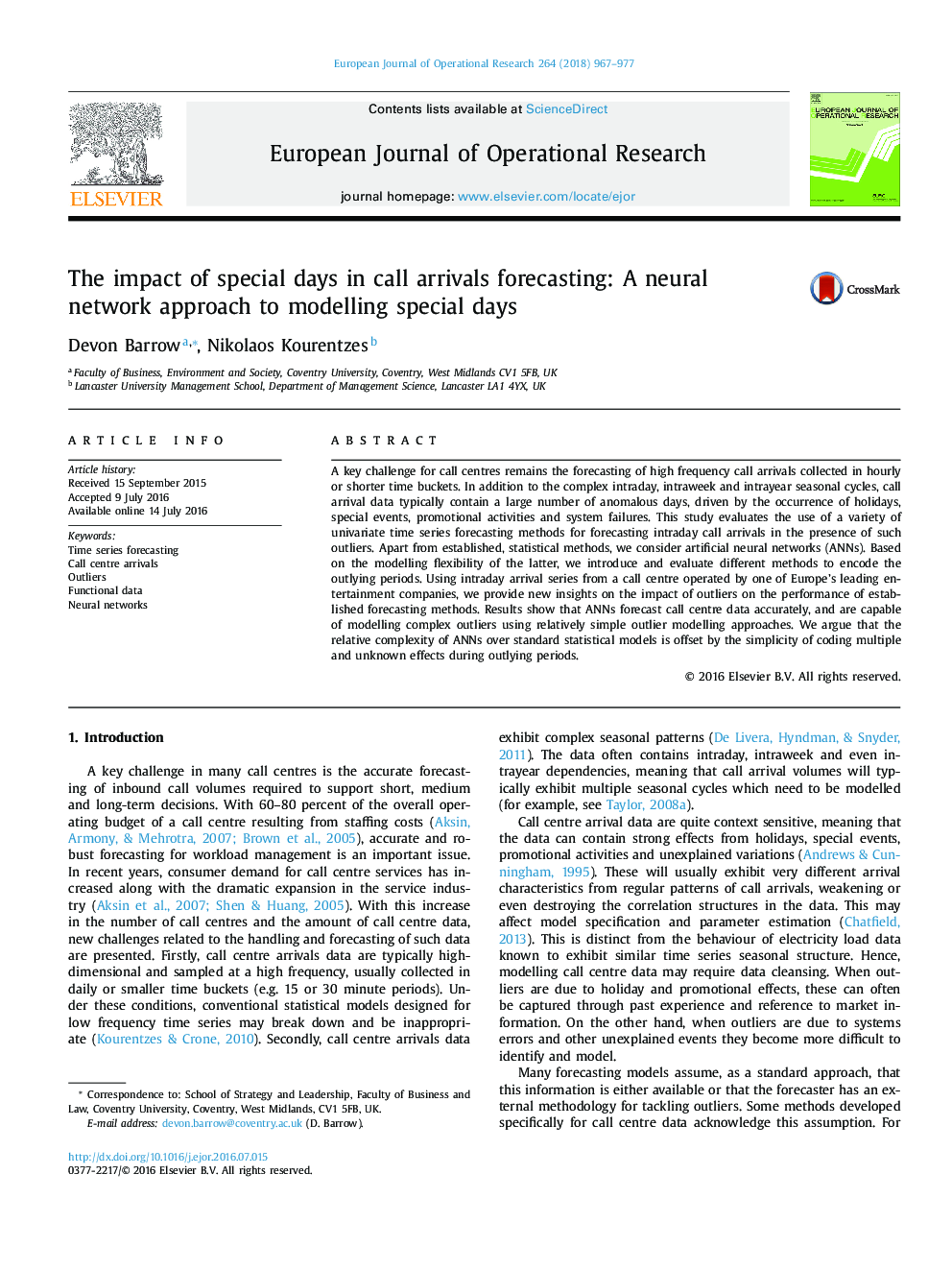| Article ID | Journal | Published Year | Pages | File Type |
|---|---|---|---|---|
| 4959315 | European Journal of Operational Research | 2018 | 11 Pages |
â¢We evaluate the effect of functional outliers when forecasting call arrival data.â¢ANNs perform best overall but the Weekly average is best on outlying periods.â¢High frequency seasonal outliers are modelled using functional data analysis.â¢We assess nine strategies for modelling functional outliers with ANNs.â¢ANNs' flexibility allows simple outlier modelling while having the best accuracy.
A key challenge for call centres remains the forecasting of high frequency call arrivals collected in hourly or shorter time buckets. In addition to the complex intraday, intraweek and intrayear seasonal cycles, call arrival data typically contain a large number of anomalous days, driven by the occurrence of holidays, special events, promotional activities and system failures. This study evaluates the use of a variety of univariate time series forecasting methods for forecasting intraday call arrivals in the presence of such outliers. Apart from established, statistical methods, we consider artificial neural networks (ANNs). Based on the modelling flexibility of the latter, we introduce and evaluate different methods to encode the outlying periods. Using intraday arrival series from a call centre operated by one of Europe's leading entertainment companies, we provide new insights on the impact of outliers on the performance of established forecasting methods. Results show that ANNs forecast call centre data accurately, and are capable of modelling complex outliers using relatively simple outlier modelling approaches. We argue that the relative complexity of ANNs over standard statistical models is offset by the simplicity of coding multiple and unknown effects during outlying periods.
